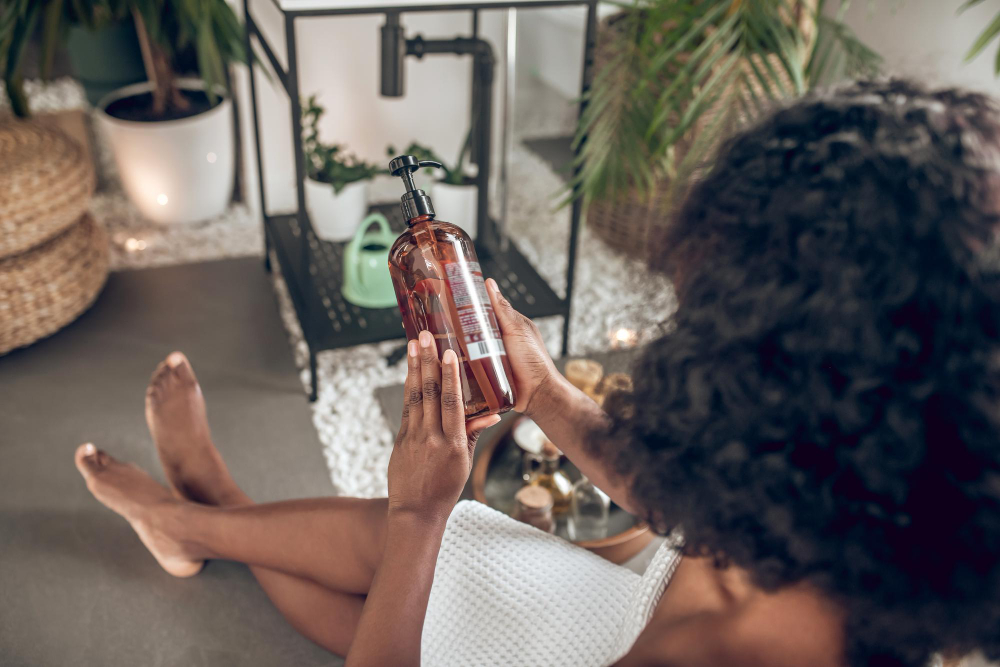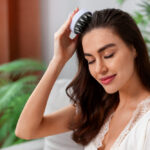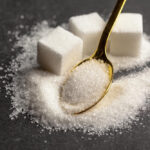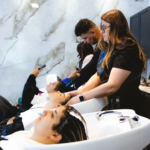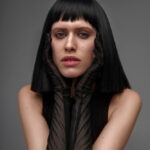Ever picked up a shampoo bottle and felt completely lost trying to make sense of the label? You’re not alone.
Hair product labels can feel like a foreign language, but they hold the key to protecting your scalp, avoiding harmful ingredients, and choosing the right products for your hair goals.
By learning how to read them properly, you’ll make more informed choices, save money, and maintain healthy and glowing hair.
Why Hair Product Labels Matter
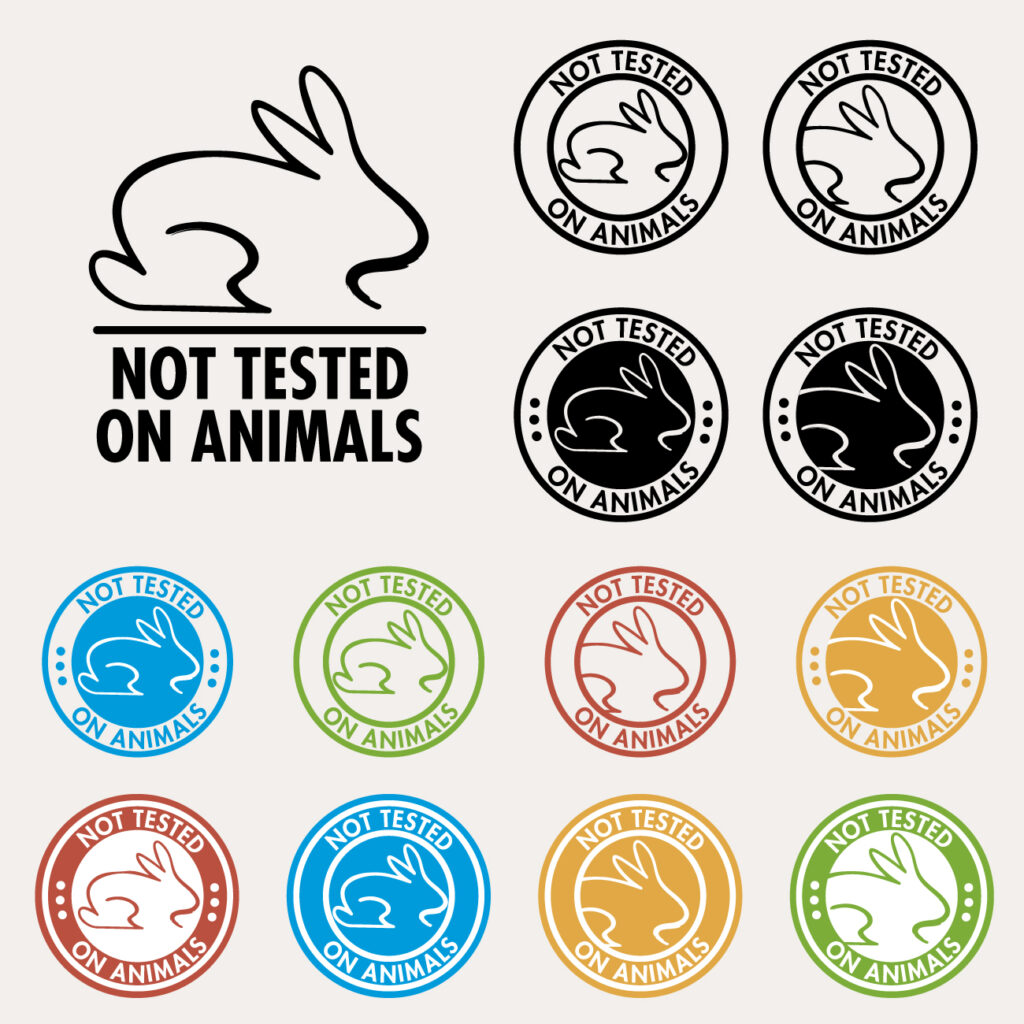
Hair product labels are more than just marketing slogans — they’re your guide to what’s inside the bottle. Reading them helps you:
- Avoid allergens and harsh chemicals that irritate your scalp.
- Understand which ingredients support your hair type (straight, curly, fine, or textured).
- Choose products that align with your lifestyle (organic, cruelty-free, sulfate-free).
👉 If you often struggle with irritation, dryness, or itching, it may be linked to ingredients in your products.
Anatomy of a Hair Product Label
Every hair care label typically includes these sections:
- Front of the Bottle: Marketing claims (“natural,” “strengthening,” “hydrating”). They’re often designed to catch your eye, not provide facts.
- Ingredients List: Found on the back. Ingredients are listed from highest to lowest concentration, so the first 5 make up the majority of the formula.
- Directions for Use: Always check the “directions on shampoo bottle” or conditioner for correct application. Misuse can reduce effectiveness or cause buildup.
- Certifications: Look for seals indicating organic, vegan, or cruelty-free products.
- Warnings: If you see “for external use only” or “avoid eye contact,” don’t ignore them.
💡 Tip: Understanding the label is also easier when you know what type of shampoo you’re using. Here’s a breakdown of the types of shampoos to help you pair the right product with your needs.
Hair Product Label Terminology (Quick Reference)
| Section | What It Is | Why It Matters |
|---|---|---|
| Ingredients List | All components are listed in descending order of concentration | Key to spotting harmful (sulfates, parabens, dyes) or beneficial (oils, proteins, botanicals) ingredients. |
| Claims | “Sulfate-Free,” “Color-Safe,” “Vegan,” etc. | Some are marketing buzzwords; others are regulated. Always double-check. |
| Instructions / Directions | How and when to use the product | Impacts performance and safety (e.g., leave-in vs rinse-out). |
| Warnings | Alerts about allergens, sensitive skin reactions, or “external use only” | Crucial for people with scalp sensitivity or allergies. |
| Certifications | Seals like “Cruelty-Free,” “USDA Organic,” “EWG Verified” | Shows third-party validation, not just marketing claims. |
| Hair Oil Labels | Ingredient lists specific to serums and oils | Helps you avoid fillers like mineral oil and choose nourishing oils like argan or jojoba. |
| Shampoo Directions | Label instructions on frequency of use or lathering | Prevents misuse that can lead to dryness or buildup. |
👉 Keep this table handy the next time you shop; it can save your scalp and your wallet.
Understanding Ingredients
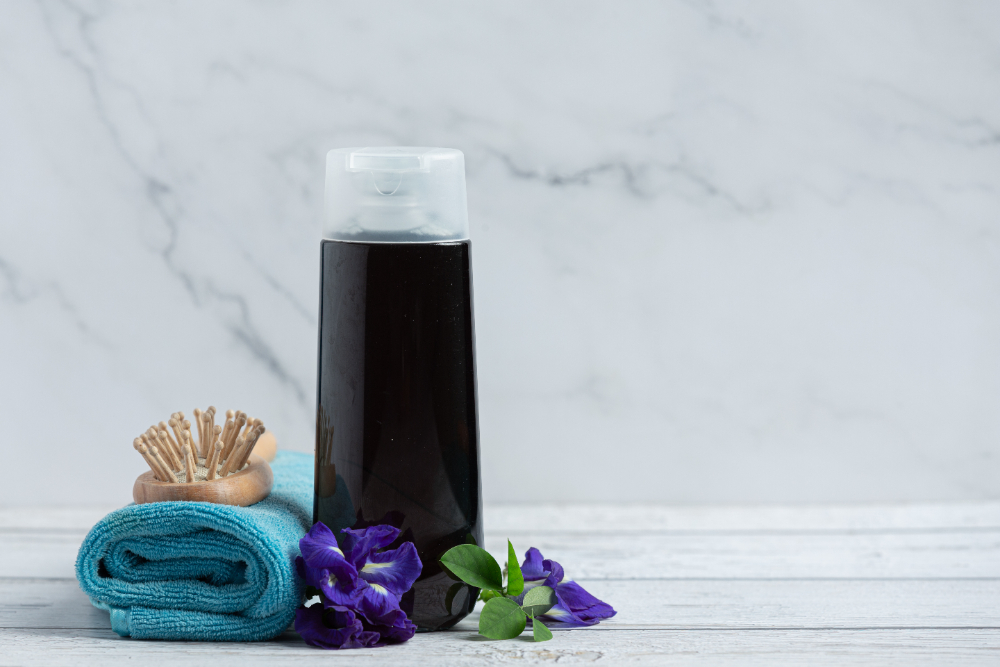
When reading labels, the ingredients list is essential. But not all ingredients are created equal.
Avoid when possible:
- Parabens (linked to hormone disruption)
- Sulfates (strip natural oils, harsh for sensitive scalps)
- Silicones (can build up, weighing hair down)
- Artificial dyes & synthetic fragrance (possible irritants)
Look for instead:
- Nourishing oils (argan, coconut, jojoba)
- Strengtheners like keratin
- Soothing ingredients like aloe vera, shea butter, and chamomile
- Formulas that support your hair type
💡 Tip: The first five ingredients make up most of the formula; focus on those, not the flashy claims.
Decoding Hair Product Labels
When holding a hair care product, remember that ingredients are listed in order of decreasing concentration. The first five ingredients typically comprise the majority of the formula.
| Term | What It Means | Should You Worry? |
|---|---|---|
| Aqua/Water | Base ingredient in most hair products | Safe |
| Sulfates (e.g., Sodium Lauryl Sulfate) | Cleansing agents that create lather | Can be harsh—especially for curly or dry hair |
| Parabens (e.g., Methylparaben) | Preservatives to extend shelf life | Linked to hormone disruption in some studies |
| Silicones (e.g., Dimethicone) | Add shine and slip | Can cause buildup over time if not appropriately clarified |
| Alcohols | Some dry (ethanol), some hydrating (cetyl alcohol) | Depends on the type—don’t assume all alcohols are bad |
| Fragrance/Parfum | Synthetic or natural scent | Vague labeling may trigger sensitivity |
| Botanicals (e.g., Aloe Vera, Argan Oil) | Plant-based ingredients | Generally nourishing and beneficial |
Consumer Tips: Reading Labels Like a Pro
Want to scan labels without feeling overwhelmed? Here’s how:
Focus on the essentials
- The first five ingredients make up the bulk of the product.
- Certifications = proof beyond marketing.
Ignore the fluff
- Words like “natural,” “green,” or “pure” aren’t always regulated.
Cross-check ingredients
- If in doubt, check shampoo ingredients against reliable resources.
Compare across products
- A clarifying shampoo may be great occasionally, but it’s too harsh to use daily. 👉 Check our article on Scalp Detox vs. Clarifying Shampoo
- Some prefer gentler methods like the No Poo Hair Care routine.
Labels & Hair Concerns
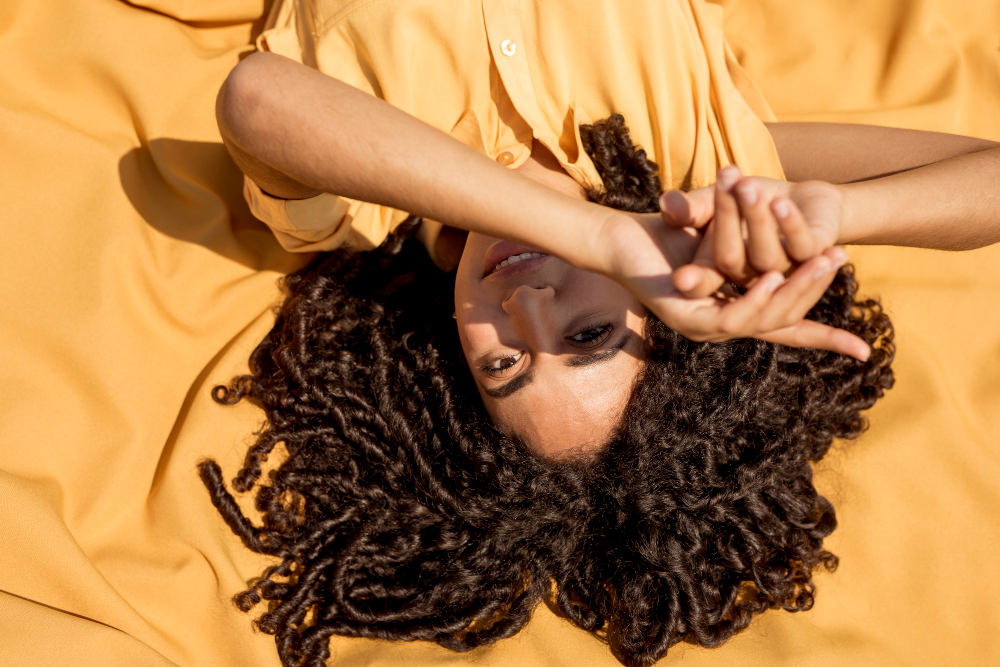
Hair product labels become even more critical if you’re tackling specific concerns:
- Sensitive scalp → Stick to sulfate-free, fragrance-free formulas.
- Hair loss → Avoid harsh ingredients; focus on scalp health.
- Dry or damaged hair → Look for hydrating agents and masks.
- Beach or sun exposure → Protect with UV filters or hydrating products.
Trusted Brands & Clean Beauty
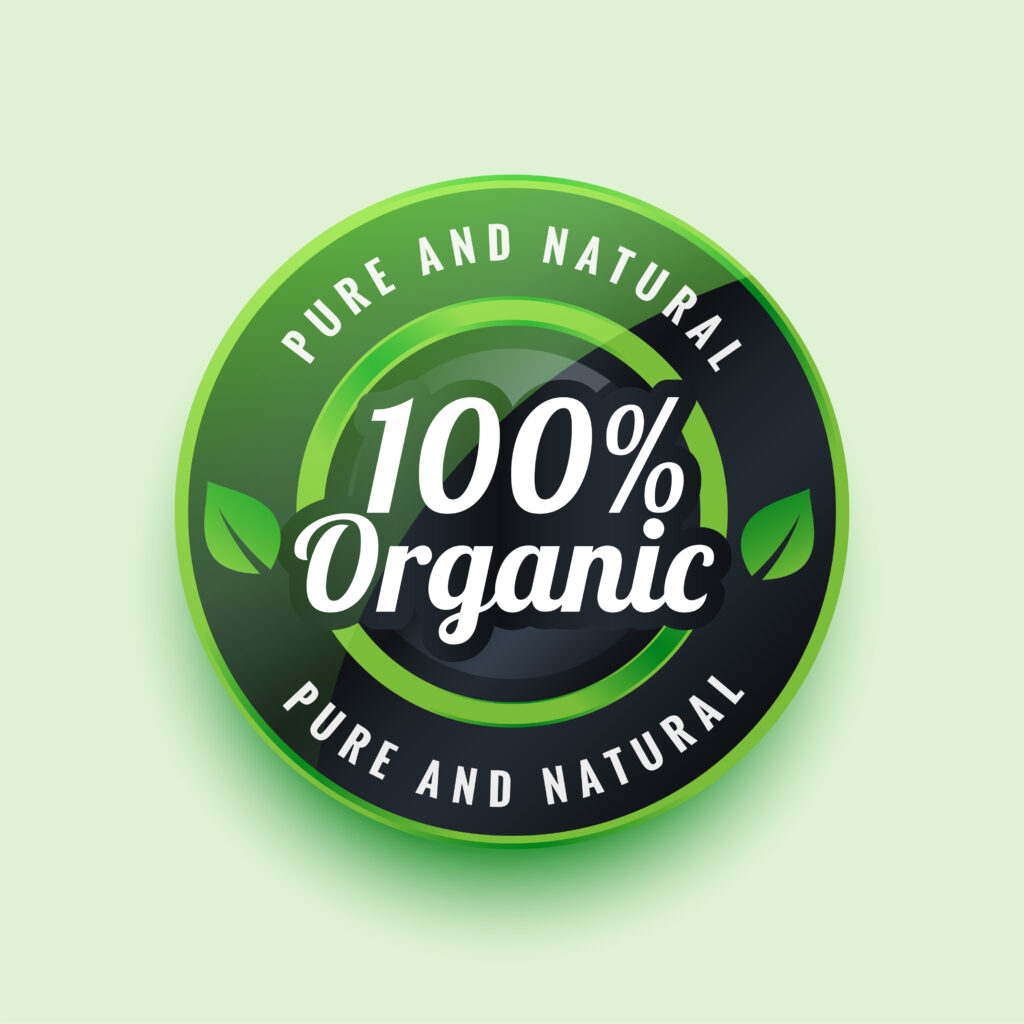
Not all hair care brands are created equal. Here are some worth exploring:
- Kérastase → Known for science-backed, luxury formulas.
- Briogeo → Clean, practical, curly-hair friendly.
- SheaMoisture → Affordable, natural-leaning, and great for textured hair.
If you’re going the organic route, browse Nature’s Brands Organic Shampoos for formulas that align with clean beauty values.
Let Us Help You Decode Labels
Reading hair product labels doesn’t have to feel overwhelming. Once you know what to look for, you’ll shop with confidence, avoid harmful ingredients, and choose products that truly work for you.
Still unsure which products are best for your hair type? Let our stylists at Haste Urban Hair Spa guide you. Bring in your favorite products (or ones you’re considering) and we’ll help you read the labels together.
👉 Book your consultation today and take the guesswork out of your hair care routine.
FAQ
How can I read clean hair care ingredient labels?
Begin by focusing on the first five ingredients, as they comprise the majority of the formula. Avoid known irritants, such as sulfates, parabens, and synthetic fragrances. Look for nourishing ingredients such as natural oils, aloe, or keratin, and check for certifications like cruelty-free or organic to ensure product safety.
Directions on shampoo bottle: what do they mean?
Shampoo directions guide you on the amount to use, frequency, and whether it should be left on your hair for a few minutes. Following them ensures optimal performance without over-stripping your hair or causing buildup. Some products also include tips for scalp massage or combining with conditioner for the best results.
How do I know if shampoo ingredients are safe?
Check for dermatologist-tested or hypoallergenic formulas, especially if you have a sensitive scalp. Avoid ingredients that are commonly irritating, like sulfates, parabens, or synthetic dyes. Certifications such as EWG Verified or USDA Organic provide additional assurance of safety and ingredient transparency.
What should I know before using hair care products?
Always match products to your hair type, scalp needs, and any sensitivities you may have. Patch test new products if you’re prone to irritation, and read the ingredient list carefully to avoid any potential issues. Following product directions and choosing formulas with transparent labeling ensures your hair stays healthy, strong, and well-nourished.

